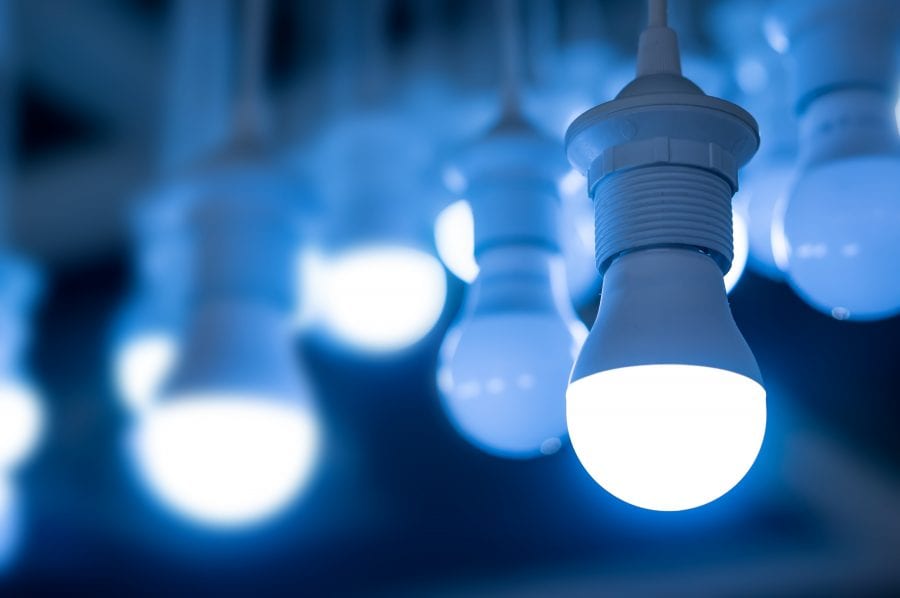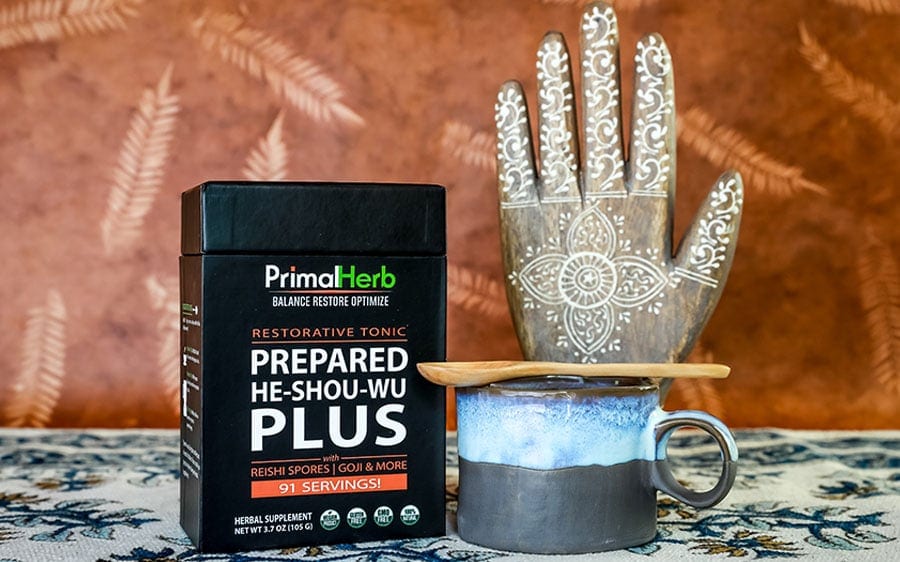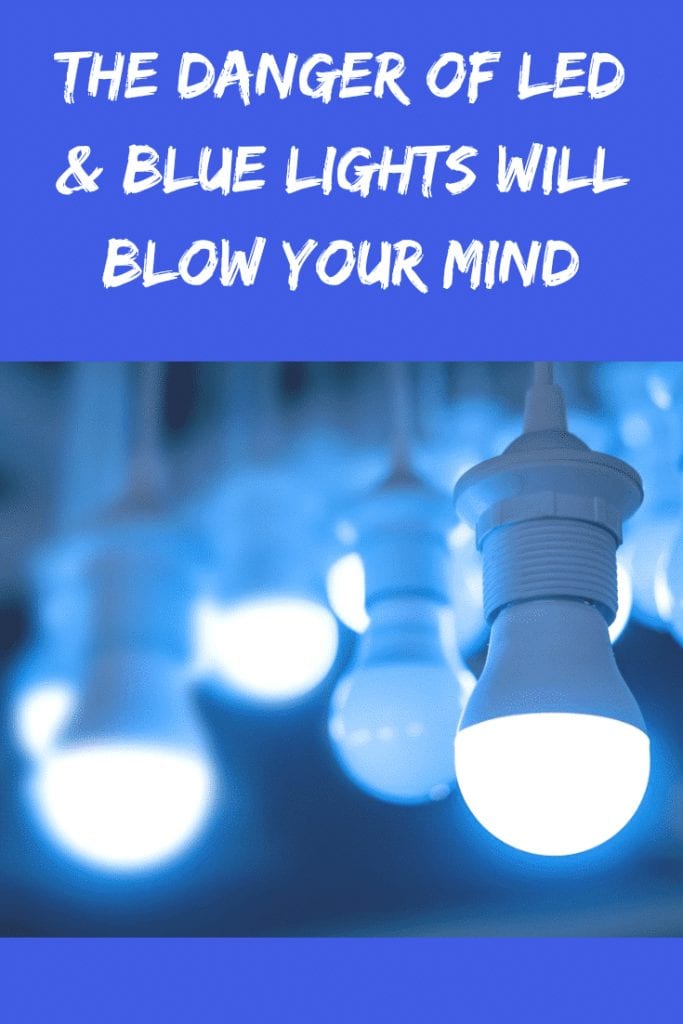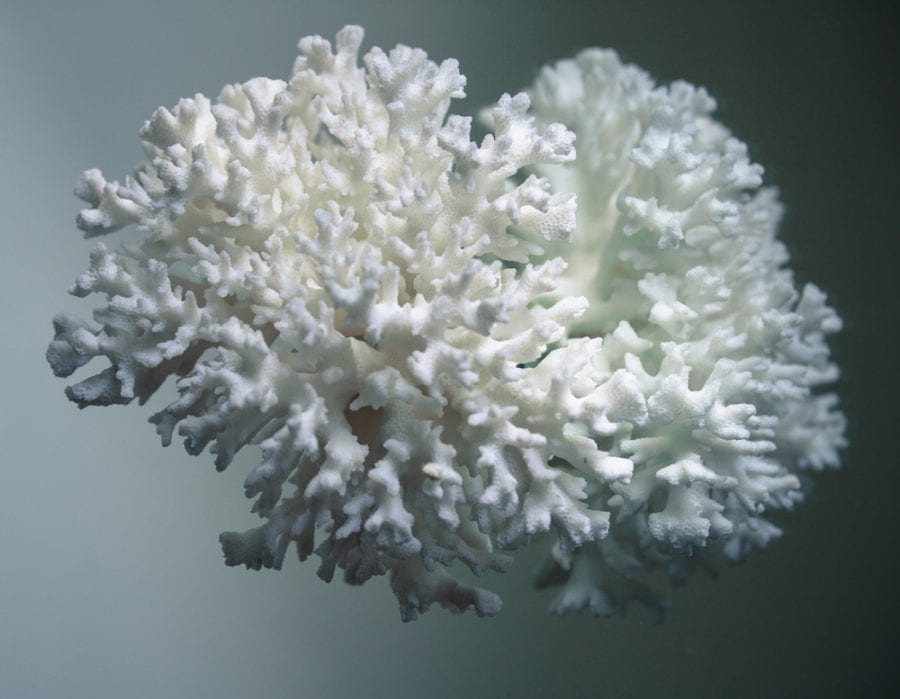The Danger of LED & Blue Lights Will Blow Your Mind
Whoever conceived that light could be bad for health?
To many of us, light just doesn’t seem like it could possibly be harmful. It lights up our world, allows us to see, and even manifests the colors we behold and enjoy—in decorations, art, movies, and media.
In some ways, modern technology and society depends on light. But how could something so illuminating and important be harmful? Well, science has some interesting things to reveal.

THE LIGHT SPECTRUM: BLUE AND RED
Contrary to what the naked eye perceives, not all light is the same. While we tend to see light as just a uniform white or yellowish color, all light is actually filled with all colors of the rainbow.
Depending on what emits the light or the light’s source, the light may contain more of one color than another – or more colors of specific kinds compared to other types of light. But how does one differentiate what light is good for health, versus what is bad?
Types of light can be differentiated by the color spectrum. On one end of the scale, they could be more on the red side (infrared). On the other, they could be bluer or more violet (ultraviolet). To get more specific and scientific, it all depends on the wavelength that the light emits—the shorter the wavelength, the bluer it is; the longer, the redder.
Between blue and red, there are loads more wavelengths of light: yellow, orange, and green to name a few. Of the most importance to health are the basic two ends of the light spectrum, blue and red—short wavelengths and long.
Light from either of these two wavelengths has the most defined effects on well-being according to studies, while other colors on the spectrum—like orange, yellow, or green—technically fall within either the blue or red color categories when it all gets boiled down.
So how does one know what color of light they are being exposed to from their light fixtures, devices, screens, or other sources?
That’s easy. Simply learn what type of light each fixture, bulb, or screen emits—such as incandescent, fluorescent, or LED light— and that helps narrow down the spectrum of light it gives off: more favorable red light, or potentially health-harming blue.
WHAT IS BLUE LIGHT?
As described above, light with a short wavelength is called blue light—or closer to the ultraviolet side of the light spectrum.
And while it’s found in a lot of our modern devices and commercial lights, studies show that it could be bringing us certain unhealthy harms, and we don’t even know it.
One study in 2011 found evidence that blue light exposure—especially in the evening time from backlit TV’s, phones, computers, or tablet screens—could suppress natural melatonin production. This can, in turn, causes sleep disruption, increases heart disease risk, and even cancer risk in the long run.
Another study later that year also found that there could be risks to eye health, especially in relation to the latest lighting technology. But the real whopper may be best explained by famous neurosurgeon Dr. Jack Kruse, who says that human beings are just overall not designed to withstand so much blue light exposure—even from our most beloved devices.
“I hope everyone realizes that artificial light has only been around on our planet since 1893,” says Kruse. “Blue light right now [at certain latitudes] has 13% blue light. On June 21st it has 26% blue light. This means the sun varies its blue light seasonally.”
His overall message: we get just the right amount of blue light from the atmosphere, but need plenty more infrared light to balance it out to avoid experiencing harmful health effects. Simply put, we don’t get that natural balance when we’re exposed to blue light-emitting devices.
“Sunlight has 42% [infrared] light year-round. This…light is the natural antidote to blue light from the sun,” Kruse says.
What more, blasting ourselves with artificial light causes our health to get out of whack. “Chronic fake blue light ruins [health] and cause[s] hormone panels to be lowered tremendously after any chronic blue light exposure,” says Kruse.
“This is why modern lights cause myopia, retinal diseases, and infertility in young people.”
DIFFERENT TYPES OF LIGHT
With that said, research and experts both agree that too much blue light can be bad. So how do we know when we are getting exposed to it? To truly know, it helps to know about different types of light, and the color wavelengths they emit.
INCANDESCENTS
If one thinks of the very first electric light sources, incandescent light bulbs would be the very ones. These bulbs were the very first light technology invented by Thomas Edison and others, and are still used today, though they are falling more and more out of style.
The reason: incandescents suck up a lot of power and energy emitting their lights, thus making them less efficient and thus less good for the planet overall. Another reason: they emit mostly red light, which to the human eye is considered less “natural,” though it does bring out certain colors and skin tones in a more flattering way.
Incandescents nevertheless still have a place in the lighting world, mostly for illuminating rooms, houses, and other spaces as lamps for various purposes—or they are used in the headlights of cars, though all this is rapidly changing. They also tend to emit natural warmth and heat, though this can be a disadvantage to some.
Still, it can be pointed out that incandescent lights hold little to no threats to health. There are both advantages and disadvantages to having them around:
Pros:
- Emits mostly red light, which poses little to no health risk—and which actually may be good for health (according to this 2016 article published by Josh Axe)
- Made with more sustainable materials and less costly heavy metals compared to other types of lights
- Inexpensive to buy
- “Warmer” light
FLUORESCENTS
Fluorescents are a somewhat more recent technology and could mark more of the “middle ground” between classically red- and blue-emitting lights.
On average, however, they tend to give out blue or ultraviolet light more than red, though some fluorescent bulbs are crafted with the intention of giving out redder or even greener color, depending on the purpose of the light or lamp.
Fluorescents (also called Compact Fluorescent Lights, or CFL’s) were also created to cut down on power consumption, increase efficiency, and to last longer. The downside: they are more expensive types of lights, though they do last much, much longer than incandescents.
Just like incandescent lights, people tend to use these as simple lamps for illuminating homes and buildings. Fluorescent bulbs are also commonly found in agricultural grow lights, black lights, lights in tanning booths and salons, and in some medical contexts. Some emit heat, while others don’t.
But—sadly—the majority of fluorescent lights one could buy tend to be emitters of blue light, though don’t give up entirely on that front. Check labels when deciding to purchase fluorescent lights. Many are designed to produce less blue light, and more green or red light instead, for example.
Pros:
- Great for purposes where more of the light spectrum is needed (e.g. growing plants, tanning, etc.)
- Very energy efficient—good for the environment
- Last a very long time (average of 20,000 hours)
- Can choose bulbs that emit less blue light
Cons:
- More expensive, though they do last longer and use less power
- Made with heavy metals which are a questionable environmental health risk
- Tend to always emit at least some amount of blue light, which can have negative health effects
LED’S
The most modern light technology of today, LED’s (short for Light-Emitting Diodes) are the newest wave of lighting, rapidly replacing the standard incandescents and fluorescents we have depended on for decades.
Why is that? Because LED’s are supremely efficient and power-saving, even more so than fluorescents. Their purchasable options as fixtures and lamps are also far more compact and convenient to operate compared to fluorescents, too.
The rub: LED’s, though they are ahead of the curve in energy savings and environmental benefits, still contain heavy metals that are questionable in terms of their sustainability—as well as their health impacts on those who use them.
And not just that: the most efficient LED bulbs of the day today are almost exclusively emitters of predominantly blue light, though there are some exceptional products that mix all colors of the spectrum—and not many are available or affordable for house use.
One is most likely to find LED’s in today’s most modern and common devices, from cameras, new car headlights, and the latest in general household lighting, all the way to backlights for screens of all kinds: computers, tablets, smartphones, and more. All these are massive sources of blue light exposure.
While technology has brought us this amazing lighting to reduce power usage, benefit the environment, and to reduce waste, its health impacts are a cause for alarm because of the blue light they put out.
All in all, it’s difficult to tell if the benefits of LED’s truly outweigh the costs.
Pros:
- Most energy-efficient lighting today, even more efficient than fluorescents, making it a money-saver
- Less energy use means less pollution—more environmental choice
- More spectrum choice (though standard is mostly blue light, and all types tend to emit lots of blue light regardless)
- Very long lifespan—some last up to between 50,000 and 100,000 hours
Cons:
- Very expensive compared to other choices—though this is offset by energy costs and being longer-lasting
- Unusual-shaped bulbs
- Light sometimes isn’t the best at illuminating specific areas
- The blue light they emit can be most harmful of all
BUT IS BLUE LIGHT ALL BAD?
It’s true that our favorite devices—powered predominantly by LED’s—can absolutely soak us in unhealthy blue light.
But that’s not to say that blue light is all bad. In fact, getting a daily dose of morning exposure to sunlight gives the body a wonderful natural boost of blue light (along with just the right amounts of infrared light) that is actually quite healthy. It improves mood, regulates hormones, and even provides some vitamin D.
On the other hand, studies have shown that blue light is specifically bad for health in the evening—a time when we just aren’t meant to be exposed to it. If chronic exposure and use of blue-lit LED devices is an issue, try putting these possessions away and reducing their use, especially late in the day—and particularly at night.
WAYS TO PREVENT TOO MUCH BLUE LIGHT
Blue light’s negative impacts on health are most worrisome from our LED-powered devices and screens, and most of all during the evening and night time.
The easiest way to keep their harms away: removing all screens and devices from rooms before going to bed, and turning off all blue light-emitting lights as well.
But if powering through and using them is a must—as in needing a lit space, having to use devices for work, or other purposes—try using blue blockers, which can be put on as glasses or placed over screens to block or reduce blue light. Some of these fit perfectly over devices of all sizes, from small phones to large laptops.
Using these—or simply getting in the habit of powering down blue light-emitting devices—could have greater impacts on health than one would think.
By cutting down on blue light exposure, there could be a very drastic reduction of one’s heart disease and cancer risk as a result—not to mention better, higher quality sleep and improved mood to boot.
Get Social – Like, Comment and Share!
Recommended
Discover Gynostemma: Nature’s Answer to Chronic Pain Relief
Pain isn’t always simple. Pain can be acute or intense, but it can also be chronic, subtle, and life-changing. No matter what pain may be like, it can be limiting. More frustrating are the limited …
Elevate Your Memory: Nature’s Best for Cognitive Boost
It can be frustrating, the way it infiltrates anything and everything in one’s routine. At first, we might not be able to put a finger on what’s going on, or even think of it as …
Chaga Mushroom Unleashed – The Research Continues to Amaze!
There are culinary mushrooms we know quite well, like button mushrooms, portobellos, even shiitakes. There are also healing mushrooms like reishi we know as supplements, too. Then there is chaga mushroom. This fungus—which looks more like …
- Exclusive Offers
- Product Giveaways
- Latest Research
- New Product Launches








